In 2024, Carbon Removal Canada conducted a voluntary questionnaire with a subset of 13 companies based in or exploring business opportunities in Canada. The purpose of the survey was to better understand future supply growth that could be expected to come online in Canada across all carbon removal project types and attendant barriers and challenges to scale. Using aggregated and anonymized data where available, we identified early trends in three primary areas across companies.
Finding #1: Team composition.
Companies are typically smaller in size and tend to have less than two dozen full-time employees. However, three companies had at least 100 employees, which could be attributable in part to historical fundraising success and the length of time that those companies have existed. There were four companies with a staff of at least 50 per cent women, while the majority of companies were male-dominated — as is typically found in the energy sector and other industries.
Finding #2: Project development.
Numerous carbon removal projects are planned or under development across the spectrum of methods, mostly at the pilot or demonstration stage and an annual capacity of hundreds to thousands of tonnes (range of 50 – 90,000 tonnes of CO2 per year, average of roughly 15,000 tonnes per project). Project locations span from western to eastern Canada, illustrating that early project development is not concentrated in one particular geographic area, even at this early, formative stage. Despite the relatively small scale of projects, partnerships with two or more external parties were commonplace, which underscores the importance of securing meaningful partnerships to successfully execute a project regardless of its size and complexity. Notably, the average time to plan and develop a project through commencement was 2.1 years, with an expected operational lifetime that spanned from a couple of years (pilots) to several decades. The vast majority of companies are relying on the sale of carbon credits as a (or the) primary revenue stream at an average cost of roughly USD$444 per tonne in either a business-to-business or business-to-marketplace type of transaction.
Finding #3: Barriers & Challenges.
Respondents noted a range of current challenges and knowledge gaps related to carbon removal project development in Canada (Table 1). Despite the small sample size, the responses were grouped into nine categories, which illustrates the diversity of barriers and challenges currently confronting the industry. Therefore, a fully supportive policy and regulatory environment will necessitate pursuing a multitude of strategies to help carbon removal companies succeed in Canada. Access to funding, uncertainty associated with carbon credit sales, and public perception were listed as the top barriers for companies to navigate.
Table 1. Self-Reported Barriers to Carbon Removal Project Development in Canada
Barrier |
Frequency |
|---|---|
| Company & project funding | 3 |
| Carbon credit monetization / market demand | 3 |
| Lack of public understanding & awareness | 3 |
| Access to laboratory space & equipment | 1 |
| Data collection & MMRV* | 1 |
| Length of research process | 1 |
| Permitting timelines | 1 |
| Policy uncertainty | 1 |
| Uncompetitive policy environment (compared to United States) | 1 |
*Note: MMRV stands for measurement, monitoring, reporting, and verification
The carbon removal industry is amidst an initial growth period characterized by a slate of pre-commercial and commercial projects being developed globally. These projects will provide significant learnings related to the progress and barriers characteristic of the industry now or in the future. A better understanding of these insights can lead to a more informed discussion about which policy and regulatory mechanisms could best support an at-scale industry positioned to help Canada (and the world) meet its climate goals.
Carbon Removal Canada wants to extend its gratitude to all those who shared their unique insights related to project development in Canada, and we look forward to leveraging these learnings to promote evidence-based policymaking that can help scale the industry in a timely and responsible manner.







